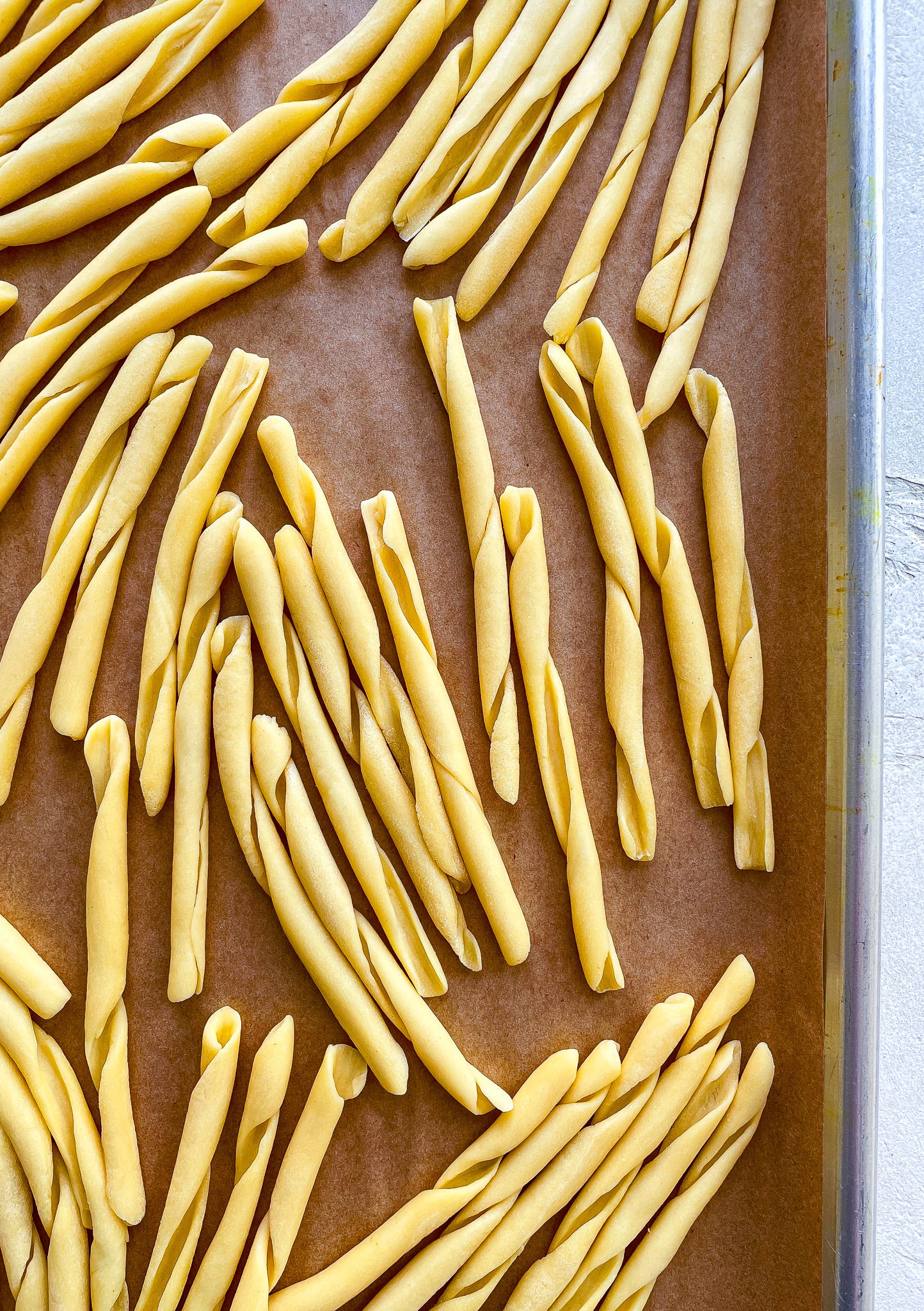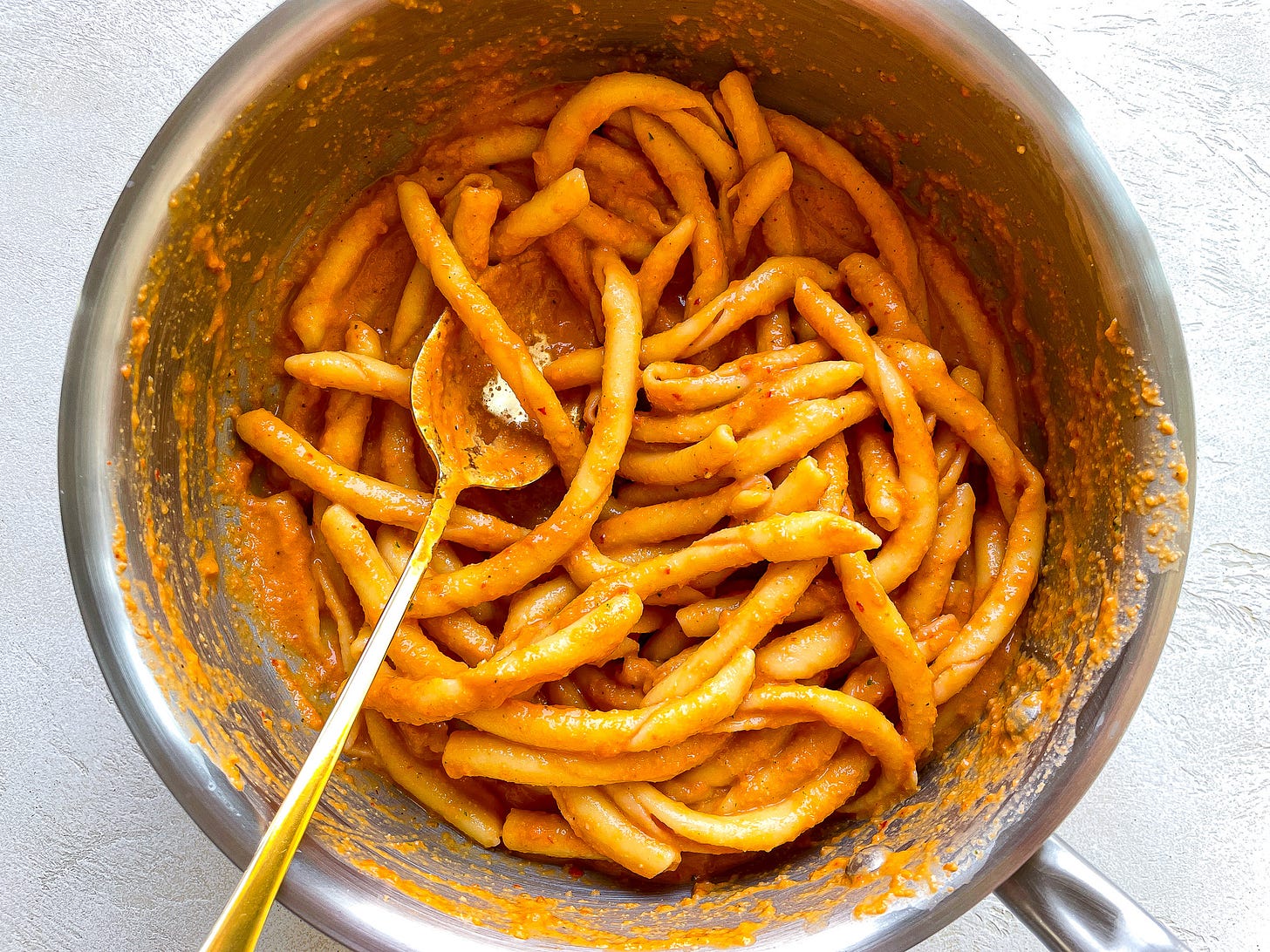I’ve loved spicy food all my life. I’m not talking about the dash-of-hot-sauce, sprinkle-of-chili-flakes kind of spice. I’m talking about near-masochistic, ear-ringing, stomach-cramping, tear-streaming, fire-breathing levels of spice. I’m the kid who casually snacked on jalapeños from the backyard vegetable garden, the teen who cackled happily when a menu came with red pepper warning signs, the adult who always orders vindaloo at an Indian restaurant. An obscene collection of spicy condiments takes up far too much space in my apartment, and still I always want more, more, more.
I might be a glutton for heat, but I’m no monster: A spicy dish doesn’t have to incinerate my insides for me to enjoy it. There are, of course, more nuanced, more mature, more elevated (my least favorite word) ways to enjoy spice, dishes that are hot but also layered and complex. And no part of Italy nails this approach to spice better than the southwest region of Calabria. You might know Calabria for its most famous delicacy, 'nduja, the fermented, spreadable, chili-spiked pork salume that’s sort of like a spicy pâté. Or perhaps you’re more familiar with Calabrian chili peppers: siren-red, fruity, and a little smoky, and primarily found jarred in oil, either whole or as a paste, here in the States. (Few things are, in my opinion, better than crushed Calabrian chilis—I reach for them far more often than any hot sauce.) What you might not have heard of is the area’s most ancient fresh pasta, and our July Pasta of the Month: fileja, Calabria’s curly maccheroni.
Fileja—also called maccarruna, maccarruni, filedda (local dialect), and ricci di donna (women’s curls), among other names—are a prime example of southern Italian pasta traditions. Like our favorite shapes from nearby Puglia, Basilicata, Campania, Sicily, and Sardinia—think cavatelli, orecchiette, busiate, malloreddus—fileja are typically made eggless, with just durum wheat flour (semolina) and water, a nod to their humble, economical origins. And, like those same shapes, no special equipment is required to make fileja: Instead, early generations of Calabrian pasta makers fashioned these elongated curls by wrapping cords of dough around whatever thin reeds or rods they could find. Over time, the tool became known as a danaco (also dinacolo or dinaciulu), a specific style of the more common iron ferretto used to make other twisted and hollow pastas like busiate and fusilli. Of course, you don’t need a danaco or even a ferretto to make fileja; a barbecue skewer, knitting needle, chopstick, severed coat hanger, or even an errant umbrella or bicycle spoke will do.
If fileja are the pride of Calabria’s fresh pasta arsenal, then it’s no surprise that they’re usually served with the area’s favorite thing to eat: something spicy. The pasta itself has ample heft and chew, and so it holds up well to the strong flavors of local specialties like 'nduja, as well as hearty sauces like pork and lamb ragùs. Fileja hail from the province of Vibo Valentia, near the Tyrrhenian Sea—an area that boasts the town of Tropea, the namesake of the famous Tropea red onions. And so, in the summertime, you’ll also come across fileja Tropeana, in which the pasta is tossed with a rustic medley of zucchini, eggplant, tomatoes, Tropea onions, and, of course, a generous pinch of peperoncino.
Since we are long past ragù season, and I’ve already bombarded you with too many zucchini recipes, today I’m pairing my fileja with summer’s favorite pasta sauce: pesto. But not just any pesto! Calabrian pesto, or pesto Calabrese, a somewhat modern variation that’s become popular throughout Italy. From all we’ve learned about Calabrian fare so far, you can probably guess that this pesto is not green, but a pretty shade of orangey red. Like many red pestos, it’s built on bell peppers and tomatoes; unlike many red pestos, it includes a satisfying dollop of fresh ricotta and a respectable dose of heat. The result is light enough for summer eating, but bold enough to stand up to a tangle of chubby fileja.
So, if you’ve been itching to try your hand at fresh pasta but haven’t known where to start, I might suggest here. For the grilling aficionados among us, grab the extra barbecue skewers you have lying around, a bag of semolina, and a few friends, and make it a pasta party—you can even make these outside, on the porch or the balcony, or, for those of us without the luxury of private outdoor space, alongside a few open windows. I can’t think of a better way to enjoy the long weekend ahead!
Fileja with Calabrian Pesto
Serves 4






